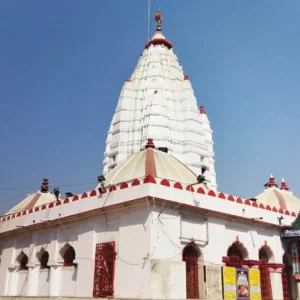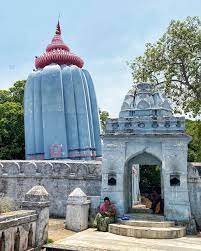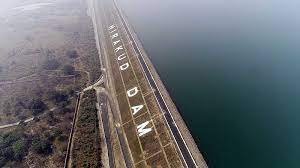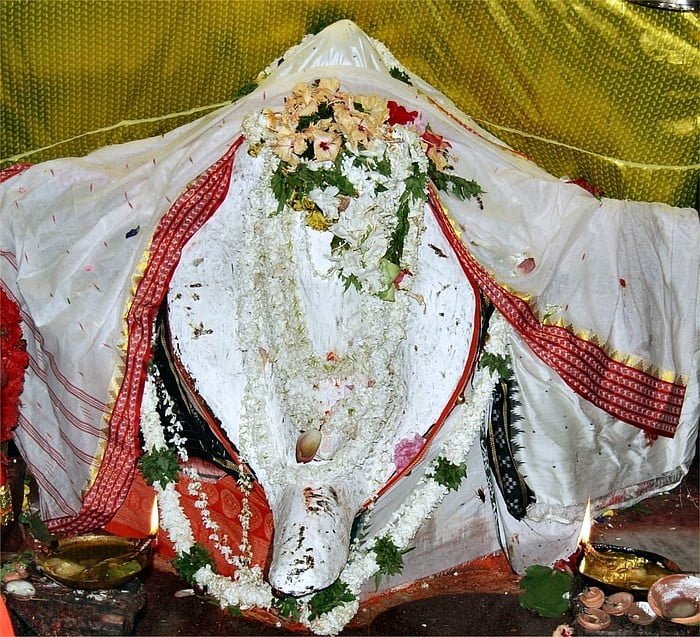No products in the cart.
SAMBALPUR: EPICENTER OF ART & CULTURE
Odisha
Maa Samaleswari Temple Town Undergoes Major Facelift
A bedecked Maa Samaleswari Temple in Sambalpur, in Western Odisha, welcomed the ministrations of Odisha CM Naveen Patnaik who was in the city to celebrate the completion of the first phase of the Samaleswari Temple Area Management and Local Economy Initiatives (SAMALEI) project. Kicked off in 2021, the first phase has been completed in a record two years.
The 17th-century shrine, nestling by the banks of the Mahanadi River is undergoing a massive re-development programme with the state government setting aside t ₹200 crore on its peripheral development, the construction of a heritage corridor, amenities for pilgrims, improved access to the temple and development of the Mahanadi riverfront. The revamp process also aims to provide a fresh impetus to tourism and the local economy in the region.
The auspicious occasion was marked by a plethora of fairy lights and murals to welcome guests. Stalls selling puja items and demos of creating Sambalpur’s iconic ikat sarees were on display at the inauguration.
The programme followed on the heels of the opening of the Rs 943 crore Jagannath Temple Heritage Corridor Project in Puri held 10 days before.
Sambalpur City
Named after the deity Goddess Samale herself, Sambalpur city has very old and deeply cherished cultural and spiritual roots. In ancient times the region was known as Hirakhanda. Historically it’s also Ptolemy’s “Sambalaka”. Both Tavernier and Edward Gibbon have left behind mentions of its diamond exports to Rome.
The epicentre of this religious hub is Shree Samaleswari who has also long been worshipped as the divine Mahasaraswati, Jagatjanani, Adishakti, and Mahalaxmi.
Shree Samaleswari Temple
The presiding deity of Sambalpur, Shree Samaleswari, is revered by devotees from Odisha as well as the neighbouring state of Chhattisgarh.
The Shree Samaleswari Temple was commissioned by King Balaram Dev the Chauhan ruler of Sambalpur in the 16th century. The temple, built under a simul (silk cotton tree) has been well preserved being constructed with stone that was even harder than granite. Odia poet Adikabi Sarala Das of the Odia Mahabharata fame refers to it as a Shaktipeetha in Odisha.
Sound and Light Show

One of the most popular activities at the shrine, the nightly Sound and Light Show attracts a great gathering of devotees and visitors. The 40-minute programme puts the spotlight on Odisha’s traditions and culture.
The Guru Padmasambhava Connect
Not many people are aware that Indian Tantric Guru Padmasambhava, the master behind Tibetan Buddhism which he propagated in the 8th century, hailed from Sambalpur. The mystique of that connection still holds people in thrall.
Padmasambhava was said to have been adopted by Indrabhuti, the King of Sambala (Sambalpur) of the Kingdom of Odiyana; he was a disciple of Kambalapada (683 CE) and Anangavajra (705 CE) and evolved into a Tantric Sidhacharya and authored many Tantric works. Having undergone various tribulations including his son dying prematurely Indrabhuti prayed to Lord Buddha to show his grace. The Buddha, hearing his pleas, appeared in the incarnation of an eight-year-old boy sitting on top of a lotus floating on Lake Dhanakosha. The boy, Guru Padmasambhava, grew up in the palace as an adored son and heir of Indrabhuti. Guru Padmasambhava it is said was trained by both his King Indrabhuti and his sister Princess Lakshminkara credited to be a preacher of Sahajagyana. Furthermore, Guru Padmasambhava, it is said, attained perfection in Sahajajoga in Viraja Khestra (Jajpur in Odisha). It was his wife Mandarva who was also instrumental in helping him attain this siddhi.
Sambalpuri Textiles

Be sure to pick up items of clothing, sarees and textiles as takeaways from Sambalpur long regarded for its ikat work. Sambalpuri Ikat has been entrenched for years here. The rural artisan communities still call it “Bandha” or tie-and -dye which means the warp and the weft are tie-dyed before weaving. Sambalpuri Ikat involves several dye baths to achieve its motifs, making it distinctive from the Pochampally ikat from Telangana which opts for the resist dye technique.
Both silk and cotton options are available in the stores in the town of this iconic tie-and-dye style of weaves. Both single ikat and double ikat designs are done here. Unmissable is the traditional Pasapali, a chess-board-like design. Popular motifs include animals like deer, elephant, and lion; floral designs are also used in profusion as are the shankha (conch) and chakra (wheel). The grand Sambalpuri silk saree is woven with threads of pure silk, mulberry silk, or tussar silk. Prominent weaving communities in the region are the Bhulias, as well as Mehers of Sonepur and Bargarh and the Patras from Nuapatna and Cuttack area. Weaving cooperatives and local haats offer a good variety to choose from.
Excursions

Leaning Temple of Huma
You don’t need to go to Pisa in Italy to see the Leaning Tower. Close to Sambalpur lies the mystical Leaning Temple in the small town of Huma nestled alongside the Mahanadi River. This unique tilting of the temple towards the north-east side i.e. the river side, and the smaller shrines here in leaning in other directions, has been ascribed by some to the shifting of the tectonic plates during an earthquake. The shrine, built in the reign of Baliar Singhdeo (1660 to 1690), Sambalpur’s fifth ruler, is dedicated to Lord Vimaleswara; it becomes a hub of frenetic activity during the annual Shivaratri festival. Lord Vimaleswara, is the primary deity of a chain of 8 Shiva-Lingas (Astasambhu) of the region.
Gudguda Waterfall
This picturesque waterfall is a huge bonus for travellers from not only Sambalpur but also neighbouring Jharsuguda and Rourkela. Located on the outskirts of the Bamra-Gangpur forest it is approached by a lovely route past lush groves of mango and litchee trees. The forest department has done good development work for the comfort of tourists in the area.
Hirakud Dam

Stretching across the mighty Mahanadi River, the Hirakud Dam is the longest in India. Just 15km away from Sambalpur the reservoir has become a big attraction for tourists. Tourists can enjoy boat rides, fishing and a plethora of water sports Eco Retreat Hirakud, situated at the bay side overlooking the Hirakud Dam offers an excellent glamping experience with a distinctive mix of comfort, tranquillity and adventure activities.
ACCOMMODATION
A wide variety of hotels, and guesthouses are on offer along with a Panthnivas in town; a glamping Eco Retreat is located at nearby Hirakud
ACCESS
Air: Nearest Airport Jharsuguda Airport 64 km from Sambalpur.
Rail: Sambalpur has four railheads— Sambalpur (Khetrajpur), Sambalpur Road (Fatak), Hirakud and Sambalpur City in Sambalpur which offer good connections.
Road: NH6 connects Mumbai to Kolkata; it goes through Sambalpur which is linked to Bhubaneshwar by NH42
















